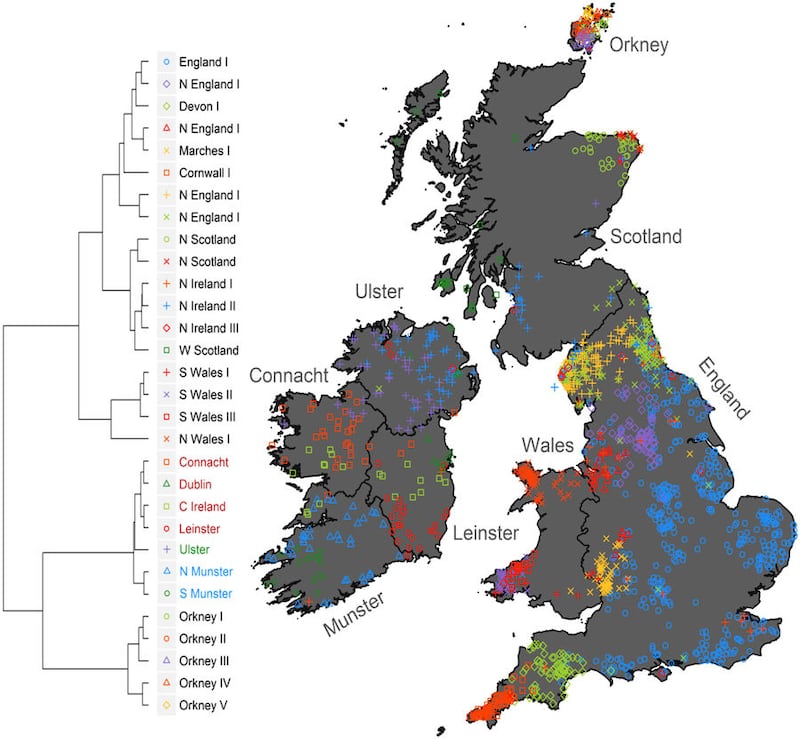A new "Irish DNA atlas" has mapped the genes of the people of Ireland in detail, finding genetic evidence of Viking settlement in Ireland for the first time.
The study has discovered that before the mass migration of people in recent decades, there were at least 10 distinct genetic clusters across the country, roughly aligned with the ancient provinces or kingdoms of Ireland.
Scientists from the Royal College of Surgeons in Ireland and researchers from the Genealogical Society of Ireland worked together to produce the atlas, using a model from the People of the British Isles project, which mapped genetics in rural England, Scotland and Wales.
The results of the Irish project could be used to improve the diagnosis of genetic diseases, the researchers claim, particularly for illnesses that are prevalent among people with Irish ancestry, including multiple sclerosis, cystic fibrosis and coeliac disease.
DNA samples were collected from 196 Irish people whose eight great-grandparents were born within 50km of each other in Ireland.*

Analysis of the samples, when compared with thousands of other samples from Britain and Europe, revealed that seven of the clusters are of "Gaelic" Irish ancestry.
The other three are of shared British-Irish ancestry, mostly found in the north of Ireland, probably as a result of the Ulster Plantations in the 1600s.
The researchers also discovered high levels of North-West French-like DNA, most likely from the Celts, and evidence of a “west-Norwegian-like ancestry”, that they believe belongs to the Norse Vikings.
While artefacts, ruins and Norwegian surnames in Ireland already provided evidence of Viking settlement, this is the first time DNA evidence has been found and mapped in the country.
Using reverse methods, the researchers also found significant levels of Irish ancestry in modern Norway, which would corroborate with accounts of Irish slave trade in the Viking era.
The very distinct geographical divides between the genetic clusters show a lack of movement within Ireland, at least up to the mid-19th century.
There is a particular “gene flow barrier” with the province of Leinster, which the researchers claim could represent historical rivalry between Munster and Leinster.
Michael Merrigan of the Genealogical Society of Ireland said the study "challenges many of our received narratives on the origins of the people of Ireland".
“We now get a clearer, scientifically based, map of the distribution and settlement of our ancestral groups across the island of Ireland,” he said.
“Historians and students of medieval Ireland have now a wonderful resource on the movements and interrelationships of our ancestor groups through their DNA.”
The Irish DNA Atlas is an ongoing study. If you have ancestry from a specific part of Ireland and are interested in participating, email Séamas O’Reilly from the Genealogical Association of Ireland at irish.dna@familyhistory.ie.
The study and atlas is published in the journal Scientific Reports.
* This article was edited on December 19th to correct an error. The original version stated that participants of the study must have had "eight grandparents" born in the same area, where it should have said eight great-grandparents.



















